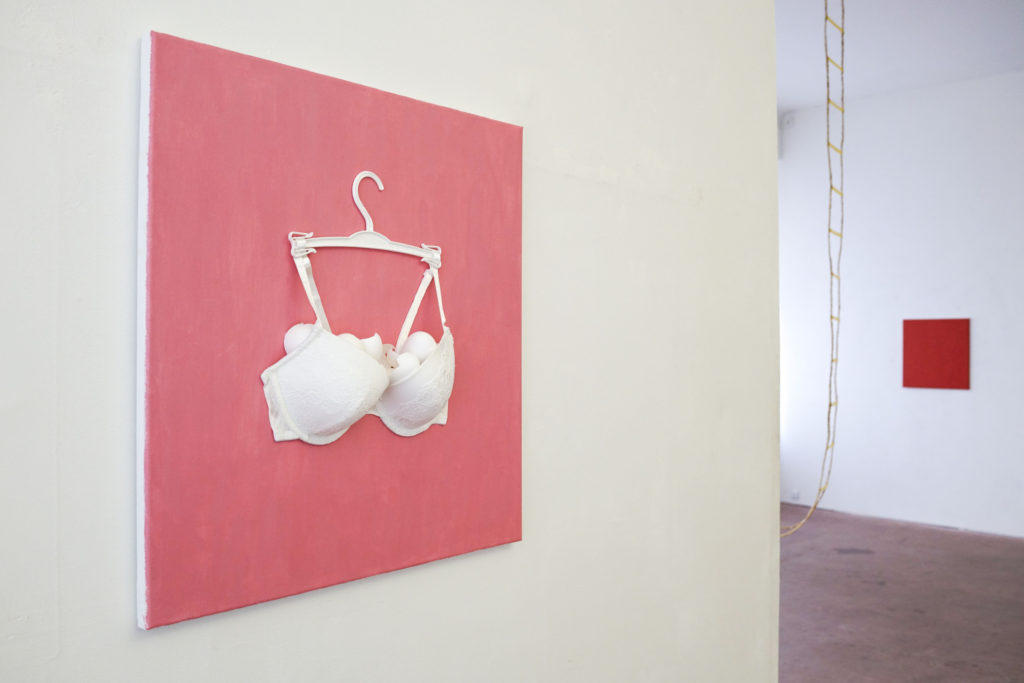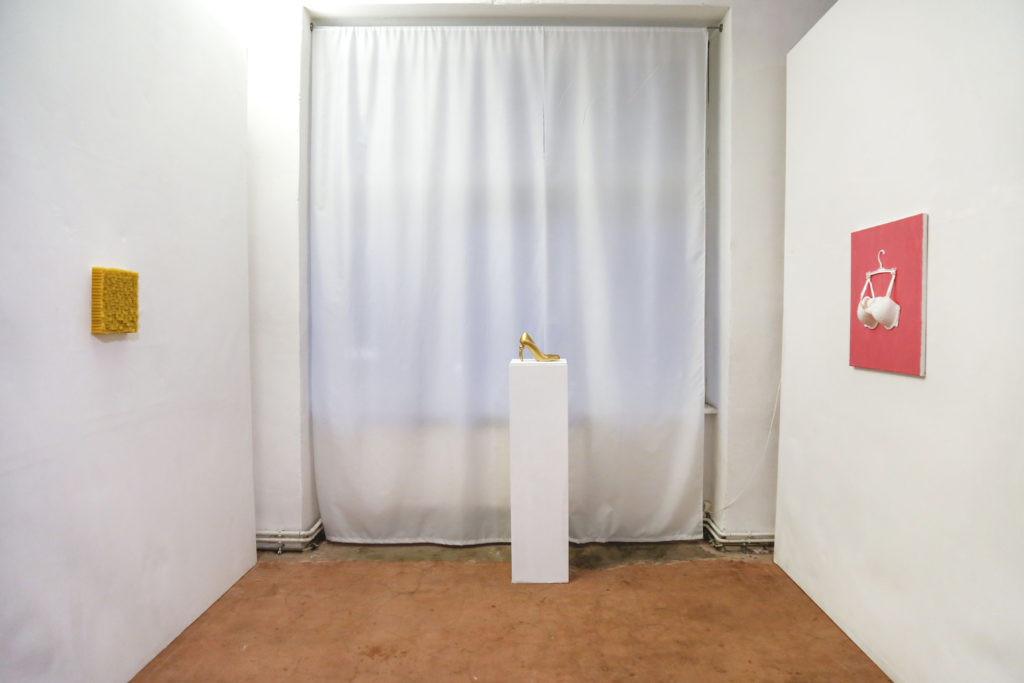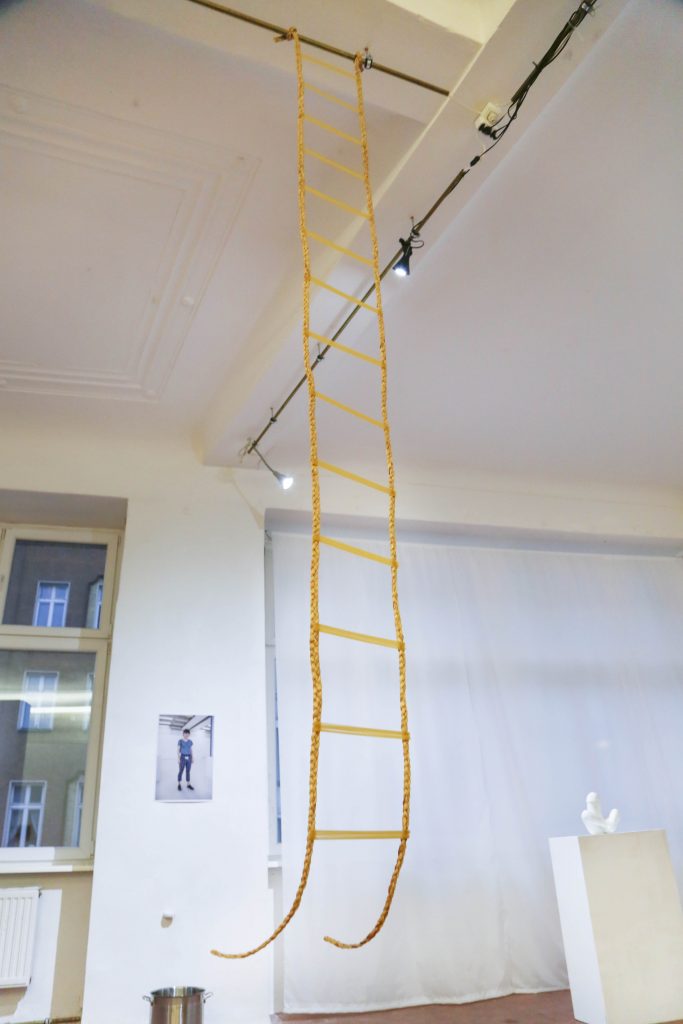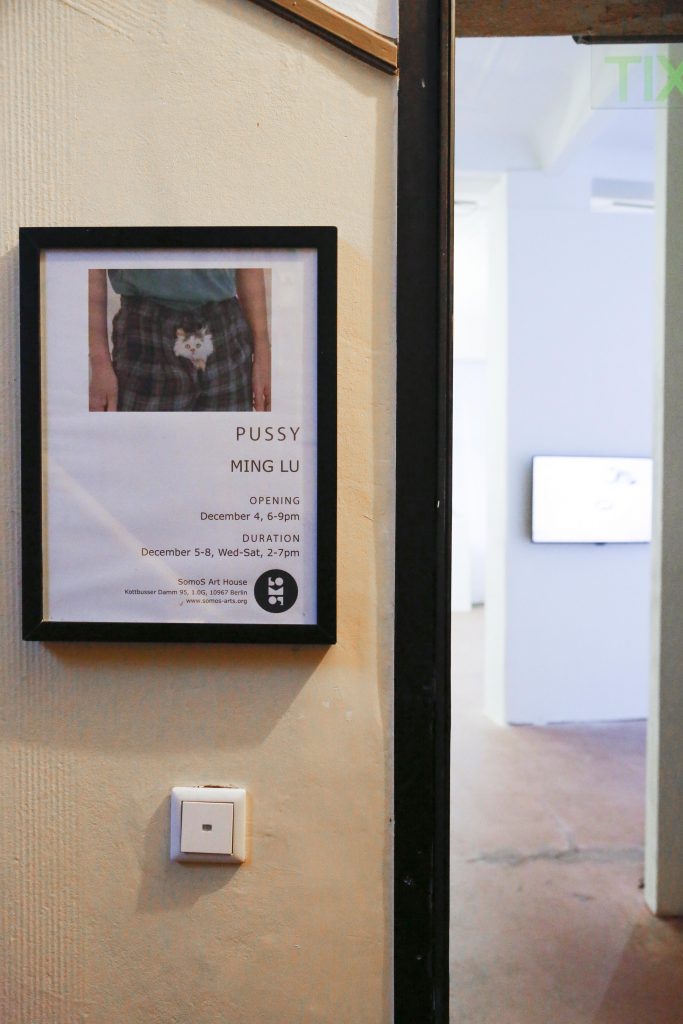The Pussy exhibition takes its title from the presented video-performance Pussy Eats, in which Lu plays with language and visual puns, addressing society’s common reductionist discourse by letting a cat figure peaking from her pants take center stage. This metaphorical and farcical use of everyday objects to speak of important issues is a typical technique of the artist, her work often veering between abstraction and literalness; between the familiar and the uncanny; between absurdity and gravity.
In her exhibition, Ming Lu employs a wide array of techniques, using installation, sculpture, ceramics, video-performance, and painting, as part of a conceptual approach addressing the trappings of female gender identity and fertility.
Combining humor and insight, Pussy invites the visitor to explore a domestic environment, in which household items such as cosmetics (notably lipstick and facial masks), lingerie, hair extensions, furniture, and food are transformed into anthropomorphic playful representations of the female body and the female experience.
Apart from the ready-mades, Lu’s use of materials range from the classic to the experimental, with simple choices leading to wide-ranging poetic and intellectual associations.
The artist’s marble sculpture Asexual Reproduction offers a contemporary interpretation of fertility myths, in which the roles are not so clear cut anymore. Using a small canvas size, and lipstick as a medium, a work from her Lipstick Painting series, Confident Red seems to invert the sublime claims of the expansionist, male-, and US-dominated genre of color field painting.
In Painted Skin 01-62, Lu painted multi-colored Asian patterns on a collection of used cosmetic masks, perhaps applying it as a kind of cultural war paint in the battle of the sexes, or as a comment on shifting beauty ideals. The sculpture Ladder Leading to Where Cannot be Named represents a fragile ladder. A ladder may symbolize the levels of social status, or escape. Social mobility, or successful flight from the confines of domesticity and servility may be dubious however, as it is made of pasta.
Ming Lu is interested in the breaking-up of forms, functions and concepts, and their transformation into something new. By placing pervasive pop-cultural symbols of femininity, fertility, domesticity, beauty and elegance in new poetic and surreal narratives and settings, she separates objects from their everyday context, as Lu puts it, “modifying objects as bodies, or vice versa,” conducting a conceptual and aesthetic play between object and objectification.












